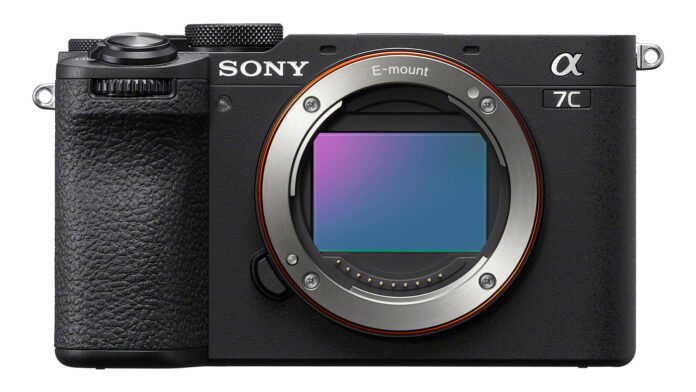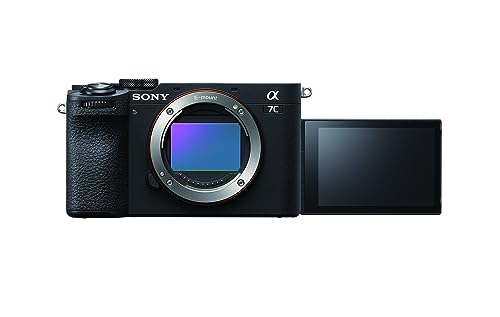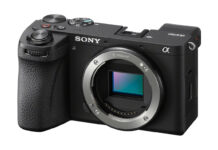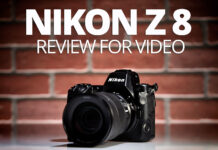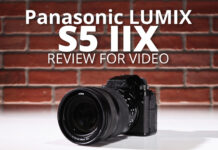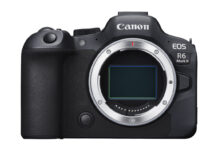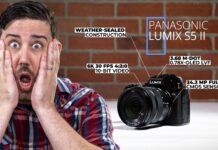At the time of the Sony a7C’s release, it was the smallest full-frame camera Sony had ever released. Now, three years after the a7C’s release, Sony has released the tiny camera’s successor: the Sony a7C II. The recently announced a7C II is the direct follow-up to the original a7C. At first glance, it looks like Sony hasn’t changed much between generations. Both cameras boast a rangefinder design, and their button layouts are almost identical. However, although they look similar on the outside, Sony has made some big changes with the new a7C II.
Do these changes make the a7C II superior to the a7C? Do they justify an upgrade from the a7C to the a7C II? That’s what we’re going to find out in this review.
Form factor
To start, let’s talk about the camera’s form factor. Following in the footsteps of its predecessor, the a7C II has a super compact form factor. This makes the camera very light and easy to carry around. Compared to the original a7C, the a7C II is just a smidgen larger. However, they’re essentially the same size.
Overall, the a7C II’s size is comparable to that of an APS-C-format camera while still retaining the a7-series build. To give you an even better comparison, the a7C II is very close to the a6700 in size. Ultimately, the a7C II is a highly portable camera that fits easily into your bag or backpack. It would be a great camera to travel with and is a breeze to operate throughout shoots.
Video capture and image quality
Now, let’s jump into video capabilities. Inside, the a7C II feautres a full-frame 33.0 MP Exmor R CMOS sensor. That’s a slight pixel boost from the original a7C’s 24.1 MP sensor. Sony pairs the 33.0 MP sensor with a BIONZ XR Processor. This duo lets you capture full-frame, 10-bit 4K footage at up to 30 fps, 4K 60 fps video with a Super 35 crop or full HD video at up to 120 fps, with full 1:1 pixel readout without binning. Additionally, you can record oversampled 4K/30p video from 7K if you want.
We were very impressed with the a7C II’s overall image quality — even a bit stunned. The camera was able to capture a ton of detail and beautiful colors. Even though the a7C II’s sensor has a few more pixels than the previous model, it still produced a stellar image.
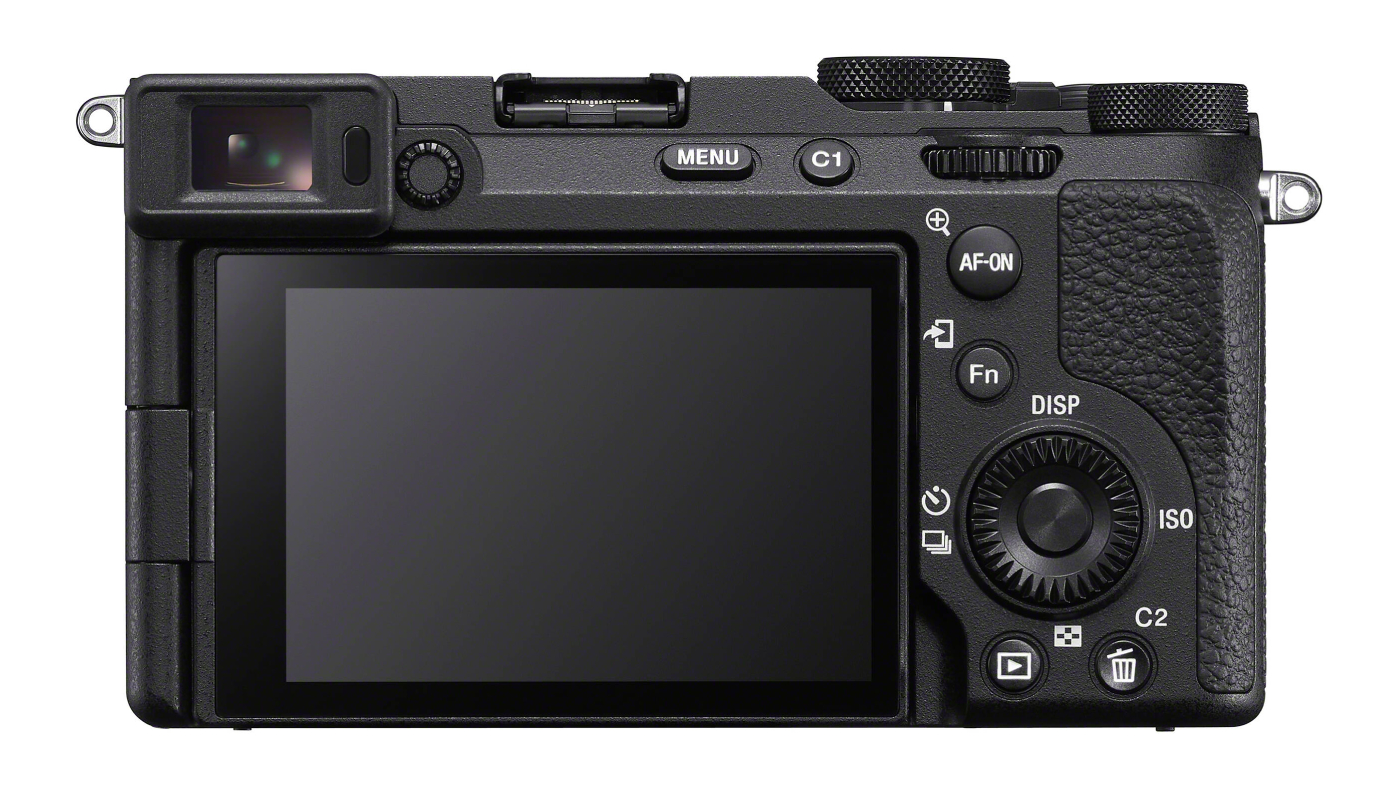
Slow-mo
When putting the a7C II’s 10-bit 4:2:2 4k 60 fps slow-mo mode to the test, we were pleased with the results. It did a great job keeping a subject in focus, even at higher frame rates. One thing to consider, though, is that the image area is cropped from full frame to a super-35 field of view when shooting at 60 frames per second in 4K, resulting in a 1.5 times crop.
Formatting
In terms of formats, the camera offers a number of formatting options, such as XAVC HS 4:2:2/4:2:0 10-bit 4K video at 23.98/50/59.94 fps. It also offers:
- XAVC HS 4:2:2/4:2:0 10-bit 4K video at 23.98/50/59.94 fps
- XAVC S 4:2:2/4:2:0 8/10-bit 4K at 23.98/25/29.97/50/59.94 fps
- XAVC S-I 4:2:2 10-bit 4K video at 23.98/25/29.97/50/59.94 fps
- XAVC S-I 4:2:2 10-bit Full HD at 23.98/25/29.97/50/59.94 fps
Color profiles
For color profiles, the camera features a robust selection. It’s quite an extensive range that offers users a ton of flexibility, allowing them to customize their footage’s look to their liking. For example, the a7C II features S-Cinetone, which works great for natural mid-tones and highlights.
To test the camera’s dynamic range, we tried out the camera’s S-Log3 and S-Gamut3.Cine gamma curves. We ended up with more than 15 stops of dynamic range. When testing the camera’s S-log3 and S-Gamut Cine color profiles, we placed our subject in full sunlight in the foreground and framed our shot so a nearby half-shadowed mountain was in the background. To our delight, there was still detail in the shot’s highlights and shadows. Oftentimes, in this type of situation, you have to choose to either overexpose or underexpose the frame. Thanks to the a7C II’s dynamic range, we didn’t have to choose one or the other.
ISO
The a7C II has a native ISO range of 100 to 51,200. However, the camera’s ISO range can be expanded to ISO 102,400 or dropped to ISO 50. With the new sensor, you will get slightly more detail than a7C, but the boost will be minimal. Still, even if it’s a small increase in image clarity, we won’t complain.
Overall, we were satisfied with how the a7C II handled itself in low light. We noticed during our testing that noise starts to show at ISO 800. However, the noise is hardly noticeable until ISO 6,400. It even looked good all the way up to ISO 25,600 in low-light conditions. However, when in the studio with the full frame illuminated, we were capped at ISO 12,800. Anything above ISO 12,800 introduced too much noise to the image for it to be useable. This is for two reasons: the noise becomes much larger, and it begins to color shift, affecting the clarity and sharpness of the image.
Image stabilization
Moving on to image stabilization (I.S.), the a7C II features a pixel-level 5-axis optical I.S. system. This system offers up to seven stops of shake compensation. This is becoming fairly common in mirrorless cameras at this price point. However, the camera also features an A.I. processing unit, which helps the lens and camera body communicate, leading to more stable framing.
All in all, the a7C II’s I.S. is good, but it’s not revolutionary. It’s not going to replace a gimbal if you’re shooting handheld. We tested all three of the camera’s stabilization modes on a mountain roller coaster, where gravity took you through the ride. At the slowest part of the ride, the camera offered some benefit. But as soon as the speed picked up, the I.S. wasn’t much help. Even though the a7C II is supposed to have two more stops of I.S. over the a7C’s five stops, we saw little difference in our testing. This will make a difference when shooting handheld still images, but for video, the upgrade was not noticeable. While handheld shooting with a wide lens, you should be fine, but that’s true for most cameras. However, if you do any kind of jarring movement, it will still result in shaky, unusable footage.
Ultimately, we don’t think the crop you get from shooting in Active Mode was worth the results. It really didn’t offer any more benefit than if we just had I.S. on alone.
Autofocus
One of the key new features of the a7C II’s autofocus system is its A.I. processing unit. This A.I. system boosts the camera’s ability to track subjects, raising its reliability and improving its real-time tracking performance. Specifically, the system’s subject-specific tracking mode was quite impressive. With this mode, the a7C II can remember your model’s faces, allowing for efficient face tracking.
Compared to the a7C, the a7C II’s subject detection is much more robust. While the a7C could track human faces and eyes, the a7C II can now also track heads and bodies with pose estimation, which can predict human poses and movements. The a7C II can also track the bodies, heads and eyes of animals and birds, as well as track insects, trains, airplanes and cars.
The new A.I. system also increases the camera’s exposure accuracy through its new autoexposure algorithm: Human Pose Estimation. The Human Pose Estimation prioritizes exposure areas, which ultimately improves the camera’s exposure accuracy by 20%.
In total, the camera has 495 phase-detection points in video mode and 59 points in stills mode. This covers about 94% of the image area. The a7C II additionally has face and eye detection, focus breathing compensation, focus accuracy in low light down to EV -4.0, autofocus assist, focus mapping and autofocus focus peaking.
We tested the autofocus by shooting our subject as wide open as we could. We used a 50mm f1.2 G-Master lens. While tracking our subject at F1.2, the camera quickly located the subject’s eyes and stuck to their eyes throughout the shoot. No matter how much the subject moved — side to side and forward and back — it stuck to their eyes like glue. It was even able to reliably keep focus on the subject when they were out of frame or blocked by something. It was very impressive.
Timelapse
The a7C II has an impressive timelapse mode as well. While testing the mode, we shot a few scenes of the night sky. Even though it was nighttime, it was a full moon, so you could still see the clouds, but there were still a few stars out. Once we got everything set up, we left the camera to its devices. As it shot the timelapse, it was able to keep its focus on the few stars in the sky, even as a few clouds passed by. We ended up with a few great timelapses that were quite easy to capture.
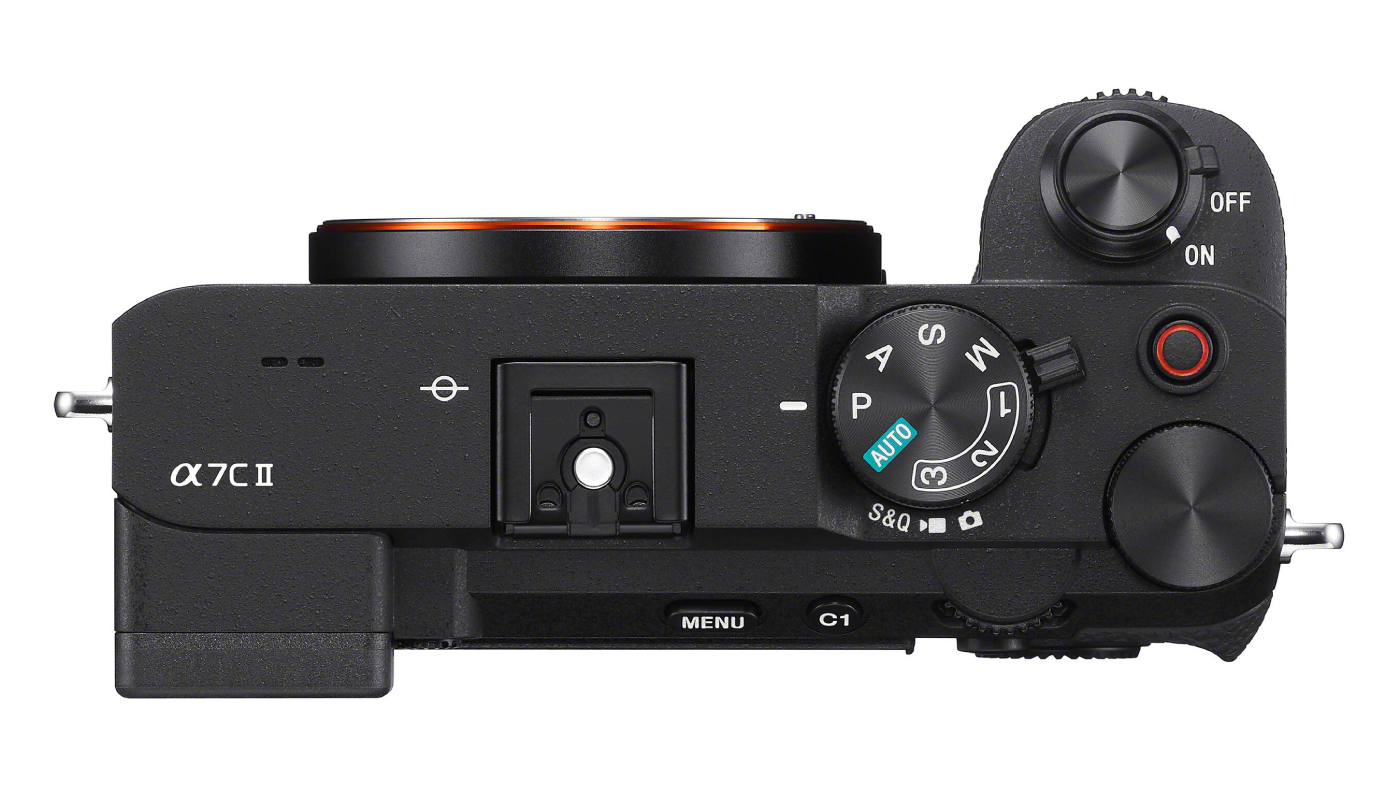
Media slot
The a7C II retains the same UHS-II SD media card slot as the original. We’d be lying if this wasn’t a bit of a disappointment, as dual media card slots are an important feature for video shooters, even as larger media becomes available and affordable. Comparing this with the Sony a7 IV, which has dual media and card slots, we feel that Sony really missed an opportunity for at least dual media with the a7C II. However, this isn’t a dealbreaker.
On another note on media, the media slot is located near all of the ports. This makes it hard to navigate when you have a cable plugged in and need to remove your media. If you’re shooting without cables, then the SD card’s placement isn’t an issue. Unfortunately for us, we were often using the HDMI port, headphone jack and mic input. We wish Sony had rethought this design choice. It was so cumbersome that we had to unplug most things to replace the media.
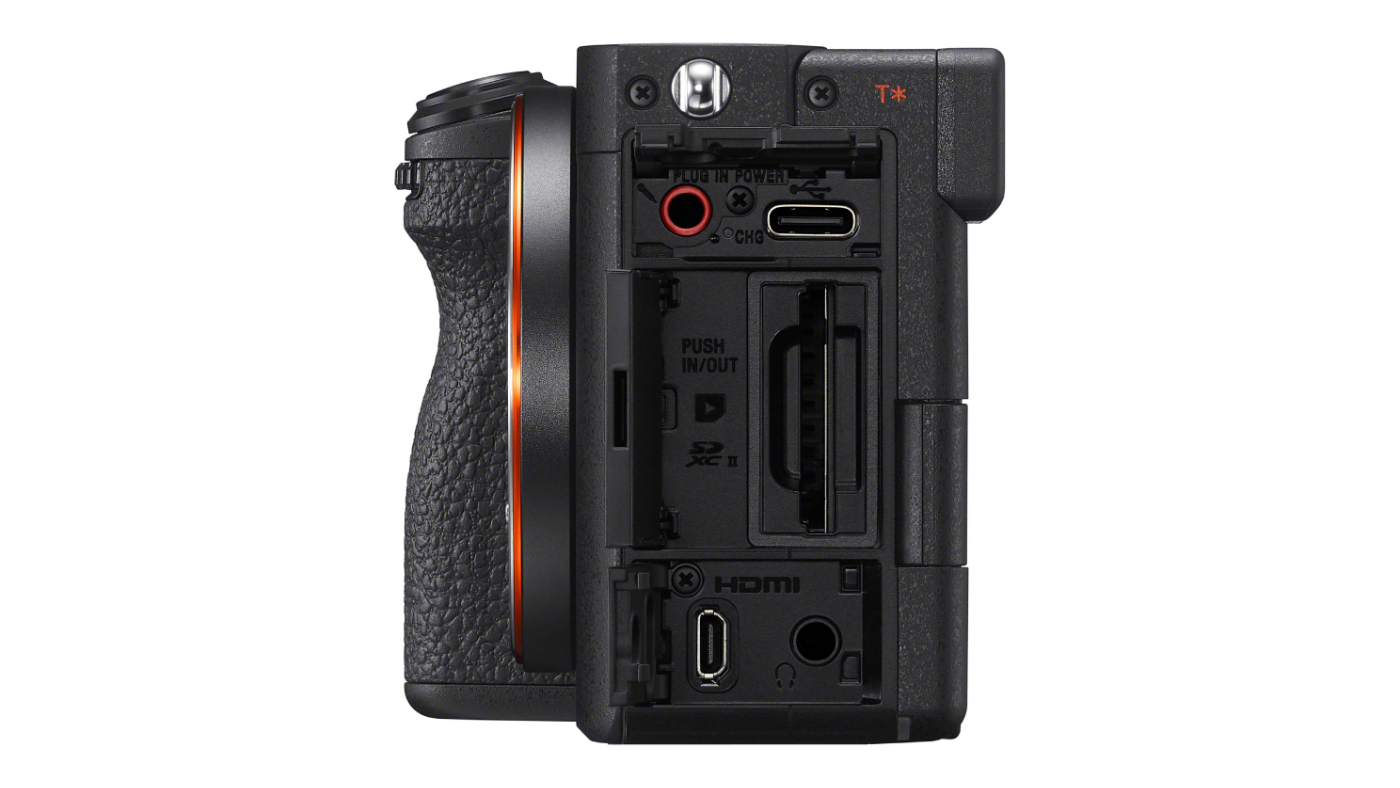
Battery
For its battery, the a7C II uses the Z-series rechargeable lithium-ion battery, the NP-FZ100. It’s the exact same battery that Sony has been using for its other cameras, like the Sony a7R IV and Sony Alpha a9 II. According to Sony, you can squeeze out about 165 minutes (or 530 stills) per charge. The battery takes about two hours to fully charge. As for video shooting, we got way more than we expected with a single battery. Gone are the days when you only get an hour of shooting on a Sony camera. We were able to shoot on and off throughout the day and still had battery life at the end of the day. Overall, the a7C II’s battery life is great. It should take you through most shoots without needing to swap out the battery.
Alternatively, you can power the camera using USB to connect it to a computer or a mobile battery. You can also use this connection to charge the battery.
Overheating
Overheating can be a real issue for some cameras. However, fortunately, it isn’t an issue for the a7C II. When we put the camera through prolonged shooting sessions, the camera didn’t experience any overheating. Even in the sun, the camera didn’t overheat.
Ergonomics
Design
When we took the a7C II out for testing, we were shocked at how close its layout and design were to the Sony a6700. In fact, the design was practically identical. We had both the a7C II and the a6700 on hand during testing, and it turned out to be quite hard to tell the difference between them. We had to check their model numbers to tell them apart. Along with size and shape, they also share the same battery and SD card location. This isn’t an issue, just something to keep in mind if you already own an a6700.
Just like with the a6700, this camera is compact — really compact. While this makes the camera highly portable, it does run into some potential grip issues. If you’ve got big hands, it’s possible the camera will slip out of your hands, as there’s not much space for pinkies. However, Sony has released a grip to add extra space for large-handed users. If you have regular-sized hands, the a6700’s grip works just fine.
Handling noise
We were shocked at just how quiet the a7C II operates. Typically, with cameras like Canon cameras, you can hear some internal handling noise as the camera’s working to record. However, the a7C II is dead silent. For most photographers, handling noise isn’t much of an issue, but for video shooters, it’s super important. Props to Sony for making the a7C II so quiet.
LCD screen
The a7C II has a side-opening, vari-angle 3.0-inch 1.03 m-dot LCD touchscreen. This screen is fully articulating and can be pulled out to various angles, from high to low to front-facing.
We tested to see how the LCD screen faired in sunlight during our tests, and it faired well. During our test, we shot in full sunlight at noon. The screen’s brightness was bright enough for us to see the screen without any issues. So, the LCD screen should work well in any bright outdoor conditions.
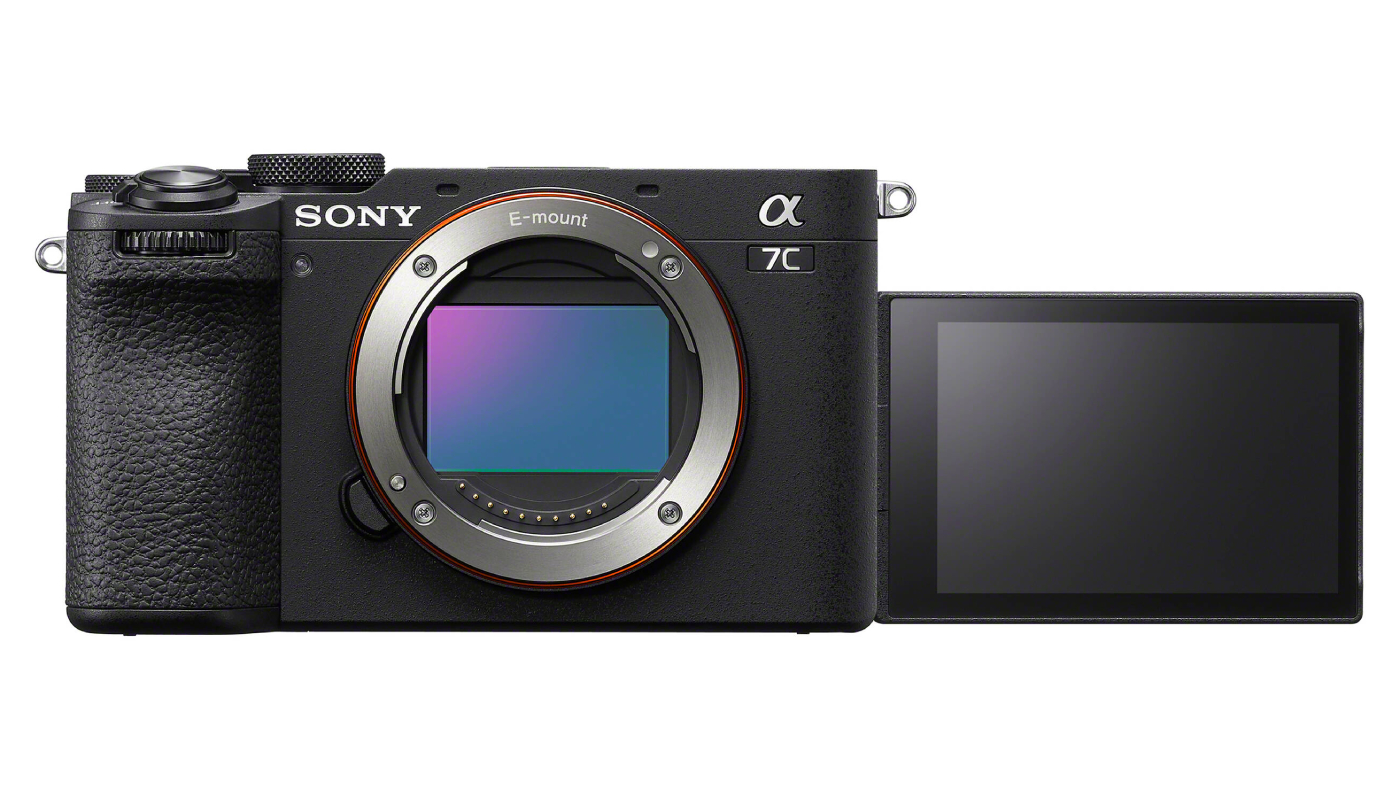
Buttons
Now, on to the a7C II’s button layout. As you can probably guess, the button layout is similar to the a67000’s layout. But this isn’t a bad thing. Despite its compact build, the button positions aren’t cumbersome to handle mid-shoot. And if you’re not a fan of the layout, you can customize it thanks to the camera’s many reassignable buttons and dials. After reassigning the buttons and dials to the settings we prefer, the camera was quick and easy to use. We didn’t have to hunt for options or functions in the menu. Everything we needed was at our fingertips.

Sony a7C vs. Sony a7C II
Now we come to the question: Should you get the Sony a7C II over the Sony a7C? Is the a7C II’s $600 higher price tag worth the extra cash, or are you better off sticking to the original? Let’s take a look at their differences and determine which one’s more worth your hard-earned dollar.
Video recording options
The Sony a7C boasts UHD 4K video recording capabilities in the XAVC S format, allowing users to shoot up to 30 fps with 2.4x oversampling. In contrast, the Sony a7C II introduces 10-bit 4:2:2 recording using the advanced XAVC S-I format, offering higher bitrates that can reach up to 600 Mb/s. Both cameras offer Full HD 1080p recording at speeds of up to 120 fps, but the a7C II has the advantage of full-frame 4K recording.
When considering slow-motion footage, both models are equipped with high-speed recording capabilities, leading to 4x and 5x slow-motion movie shots. The a7C II, however, brings the Slow & Quick (S&Q) mode to the table, allowing videographers to capture varying frame rates for desired outcomes.
Diving deeper into the color and gamma controls, the a7C utilizes the S-Log2 Gamma Curve, which captures a vast dynamic range, surpassing the typical Rec.709. It also supports HLG for HDR-ready content right out of the camera. On the other hand, the a7C II offers S-Log3, giving videographers more than 15 stops of dynamic range. A notable distinction is the a7C II’s S-Cinetone feature. Sony touts it as a happy medium between shooting Rec.709 and Log, while maintaining a pleasant skin tone.
Overall, the Sony a7C II provides a broader range of advanced recording features and formats.
Image quality
We were stunned by the a7C II’s image quality. Its 33 MP full-frame Exmor R CMOS sensor does offer some more detail than the a7C’s 24.2MP Full-Frame Exmor R BSI sensor. Both cameras have the same ISO ranges and have back-illuminated designs.
In terms of overall image quality, the a7C II takes the cake.
Autofocus
The Sony a7C uses its 5-axis SteadyShot INSIDE system. In contrast, the a7C II’s autofocus system is powered by its advanced AI processing unit. It boasts up to 759 phase-detection points, AI-driven subject recognition and real-time tracking. We were really impressed with the a7C II’s AF system, and it really does make a difference, especially when shooting on the fly.
Which one offers more value?
It’s clear that the a7C II offers more advanced features for videographers. That alone makes the a7C II worth its price. If you don’t already own the a7C, the a7C II is the clear choice if you have the budget for it. However, if you already have the a7C and are considering an upgrade, that’s a tougher question. If you want a slight boost in image quality and more proficient autofocusing, then it may be worth considering upgrading to the a7C II.
Marketplace
Sony a6700
Though the a6700 and the a7C II are fairly similar, the biggest difference between the two is their image sensors. The a6700 has a 26 MP APS-C sensor, while the a7C II has a larger 33 MP 35 mm full-frame sensor. Both cameras have a BIONZ XR processor with 15 stops of dynamic range.
The cameras come close on video recording options, though the a6700 offers a bit more. The a6700 can capture oversampled 4K/60p video from 6K full-frame video. It can also record 4K/120p with a 1.62x crop at 10-bit 4:2:2 or 4:2:0.
Price-wise, the Sony a6700’s current price tag is much lower than the a7C — about a $800 difference.
Sony a7 IV
Another comparable option is another Sony full-frame camera, the Sony a7 IV. This camera houses a 33 MP full-frame Exmor R BSI CMOS sensor and a BIONZ XR image processor. On paper, this pair puts the a7 IV’s image quality on the same peg as the a7C II’s. The Sony a7 IV can capture UHD 4K XAVC HS 10-bit video at up to 30 fps and features 7K oversampling, putting it in tight competition with the a7C II.
The camera also offers oversampled 4K recording through a 4.6K capture area with a Super 35 crop. Additionally, the Sony a7 IV comes with tons of color and gamma controls, like S-Cinetone, HLG and S-Log3.
Overall, the Sony a7 IV is quite comparable in price to the a7C II, with a price tag that’s about $300 more.
Sony a7CR
For about $800 more, you can get the higher-resolution a7CR. This camera comes with a 61 MP full-frame Exmor R BSI sensor and a BIONZ XR image processor. This puts the camera at almost double the pixel count as the a7C II. Its ISO range clocks in higher as well, coming in at a range of ISO 100 to 32000. This is expandable to ISO 50 to 102400. As for autofocusing, the a7CR uses the same AI-powered autofocusing system algorithms as the a7C II.
The a7CR can record full frame, 4K 60 fps video in 10-bit 4:2:2 using the XAVC S-I format. You can also use Super 35 crop, full pixel readout recording at up to HD 4K at frame rates up to 30p. You can oversample 6.2K video as well.
Is the Sony a7C II worth getting?
We were very impressed with the Sony a7C II. Although it’s not perfect, the a7C II delivers great-looking video in a compact, portable package. While we would hope that its stabilization would offer a bit more benefit, its autofocus system is extremely helpful, and it captures professional-level video in a wide range of environments — from noon sunlight to dusk darkness. If you’re looking for a portable and capable full-frame camera, the Sony a7C II is definitely worth considering.
Pros
- AI-powered autofocus
- Compact size
Cons
- Location of SD card
- APS-C crop in 4K 60
Tech specs
| Lens mount | Sony E |
| Sensor resolution | Actual: 34.1 megapixel Effective: 33 megapixel |
| Image sensor | 35.9 x 23.9 mm (full-frame) CMOS |
| Image stabilization | Sensor-shift, 5-axis |
| Built-in ND filter | None |
| Capture type | Stills & Video |
| Shutter type | Electronic shutter, mechanical focal plane shutter |
| Shutter speed | Mechanical shutter 1/4000 to 30 seconds Electronic shutter 1/8000 to 30 seconds 1/8000 to 1 second in Movie Mode |
| Bulb/Time Mode | Bulb Mode |
| ISO sensitivity | Photo 100 to 51,200 in Manual Mode (Extended: 50 to 204,800) 100 to 12,800 in Auto Mode Video 100 to 51,200 in Manual Mode (Extended: 50 to 102,400) 100 to 12,800 in Auto Mode |
| Exposure Modes | Aperture Priority, Auto, Manual, Program, Shutter Priority |
| Exposure compensation | -5 to +5 EV (1/3, 1/2 EV steps) |
| Metering range | -3 to 20 EV |
| White balance | 2500 to 9900 K Presets: AWB, Cloudy, Daylight, Flash, Fluorescent, Manual, Overcast, Shade, Tungsten |
| Continuous shooting | Up to 10 fps for up to 44 frames (RAW) / 1,000 Frames (JPEG) |
| Image sizes | 3:2 33 MP (7008 x 4672) 14 MP (4608 x 3072) 8.2 MP (3504 x 2336) |
| Aspect ratio | 3:2 |
| Image file format | HEIF, JPEG, RAW |
| Bit depth | 14-bit |
| Internal recording modes | XAVC HS 4:2:2/4:2:0 10-bit 3840 x 2160 at 23.98/50/59.94 fps [30 to 200 Mb/s] XAVC S 4:2:2/4:2:0 8/10-bit 3840 x 2160 at 23.98/25/29.97/50/59.94 fps [60 to 200 Mb/s] 1920 x 1080 at 23.98/25/29.97/50/59.94/100/120 fps [16 to 100 Mb/s] XAVC S-I 4:2:2 10-bit 3840 x 2160 at 23.98/25/29.97/50/59.94 fps [240 to 600 Mb/s] 1920 x 1080 at 23.98/25/29.97/50/59.94 fps [89 to 222 Mb/s] |
| External recording modes | 4:2:2 8/10-bit via HDMI UHD 4K (3840 x 2160) at 23.98/25/29.97/50/59.94 fps HD (1920 x 1080p) at 23.98/50/59.94 fps HD (1920 x 1080i) at 50/59.94 fps |
| Fast-/slow-motion support | Yes |
| Gamma curve | S Cinetone, Sony S-Log 3 |
| Recording limit | None |
| Broadcast output | NTSC/PAL |
| IP streaming | MJPEG, UVC/UAC 3840 x 2160 at 12.5p, 14.99p, 25p, 30p 1920 x 1080 at 25p, 30p, 50p, 60p 1280 x 720 at 25p, 30p |
| Built-in microphone type | Stereo |
| Audio recording | Two-channel 16-bit 48 kHz LPCM audio |
| Media/memory card slot | Single slot: SD/SDHC/SDXC (UHS-II) |
| Video I/O | 1 x Micro-HDMI (unspecified signal) output |
| Audio I/O | 1 x 1/8-inch / 3.5 mm TRS stereo microphone input on camera body 1 x 1/8-inch / 3.5 mm TRS stereo headphone output on camera body |
| Power I/O | 1 x USB-C input/output |
| Other I/O | 1 x USB-C data input/output (shared with power input) |
| Wireless | 2.4 / 5 GHz Wi-Fi 5 (802.11ac), Bluetooth 4.2 |
| Mobile app compatible | Yes: Android & iOS App name: Creators’ App Functionality: access stored files, adjust settings, remote control |
| Global positioning (GPS, GLONASS, etc.) | GPS |
| Monitor display size | 3 inches |
| Monitor resolution | 1,036,800 dot |
| Display type | Tilting touchscreen LCD |
| Viewfinder type | Built-in electronic (OLED) |
| Viewfinder size | 0.39 inches |
| Viewfinder resolution | 2,359,296 dots |
| Viewfinder eye point | 22 mm |
| Viewfinder magnification | Approx. 0.7x |
| Viewfinder adjustment | -4 to +3 |
| Focus type | Auto and Manual Focus |
| Focus mode | Continuous-Servo AF, Manual Focus, Single-Servo AF |
| Autofocus points | Photo Contrast detection, Phase detection: 759 Video Phase detection: 627 |
| Autofocus sensitivity | -4 to +20 EV |
| Battery type | 1 x NP-FZ100 rechargeable lithium-ion (Approx. 530 Shots) |
| Shoe mount | 1 x intelligent hot shoe |
| Tripod mounting thread | 1 x 1/4 inches-20 Female (Bottom) |
| Material of construction | Magnesium alloy |
| Dimensions (W x H x D) | 4.9 x 2.8 x 2.5 inches / 124 x 71.1 x 63.4 mm |
| Weight | 1.1 lb. / 514 g (with battery, recording media) 15.1 oz. / 429 g (body only) |

